Falafel is a popular Middle Eastern dish made from ground chickpeas, herbs and spices. They are shaped into small round or flattened balls and deep-fried until crisp. These are best enjoyed fresh.
Jump to:
😊 How can we enjoy Falafel?
- on their own, dipped in houmous or tahini sauce. Just the right size to pick up with your fingers, dip and eat in a couple of bites 😊
- eaten as part of a mezze platter. Alongside other Middle Eastern favourites, like tabbouleh and baba ganoush.
- as the hero of a meal, stuffed in pitta pockets or rolled up in flatbreads. They're often combined with fresh vegetables like lettuce, tomatoes, cucumbers and pickles. And with sauces like houmous and tahini 🥙
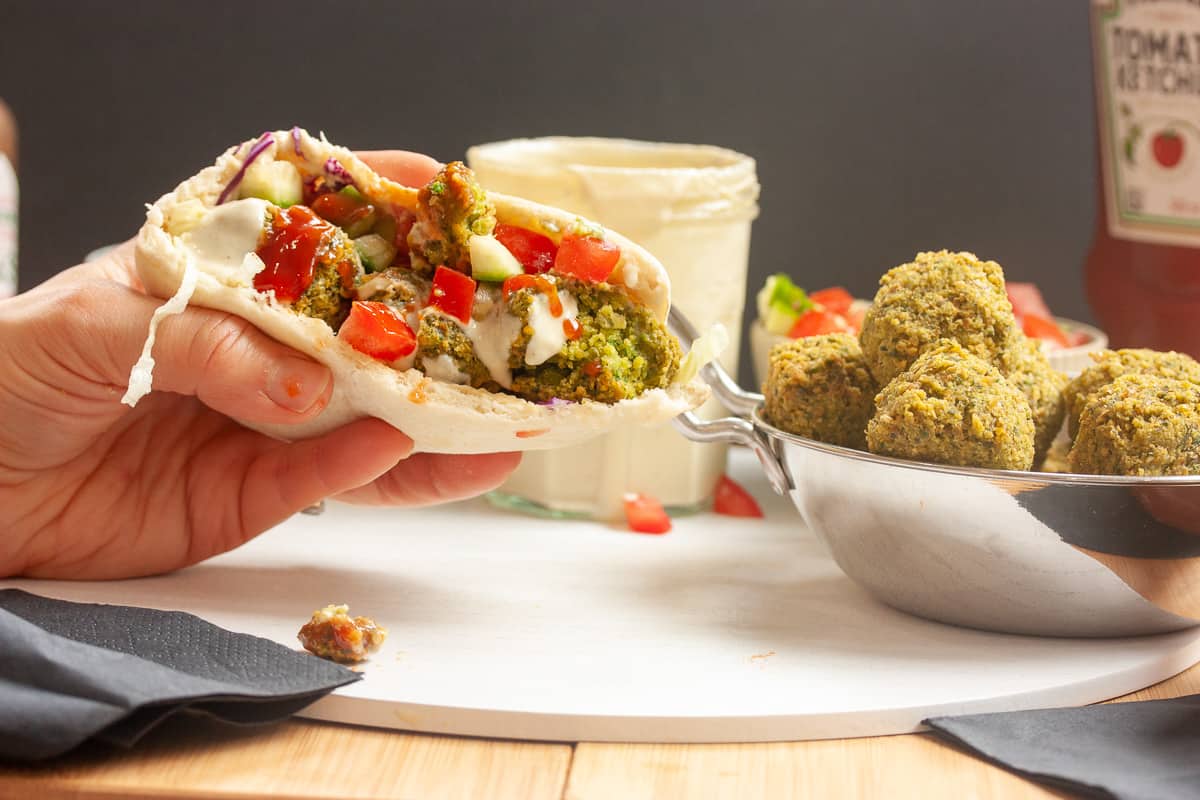
This recipe makes about 20 falafel balls. This is enough for four people for a main meal. We eat a pitta bread each, cut in half to make two pitta pockets. Each is jam-packed with two squished falafel, salad and sauces. There will be a few extra falafel to snack on after. Caveat: provided you didn't eat them while waiting for the second batch to fry 😊
This is probably the most widely eaten vegan meal that most people wouldn't even realise is vegan. I mean; *even* my husband and kids love this for dinner. Depending on where you live, falafel can be quite hard to buy freshly made. Don't even think about buying those ready-made ones in the supermarket; they're universally bad.
I know deep-frying anything is a bit of a faff 😊 I wouldn't suggest it unless it was *critical* to the success of the recipe. The contrast between a herb-flecked soft interior and a golden-brown crunchy exterior is key to making great falafel. This is maximised if we immerse them in very hot oil. These fry quite quickly, in around 4 minutes.
🤔 how do we make falafel?
- Soak chickpeas overnight (8-24 hours) in plenty of cold water, salt and baking soda. We change the soaking water once (if we remember).
- Drain and dry the chickpeas. Use a food processor to blend to a coarse paste with herbs and spices.
- Form into small balls - round, disc or torpedo shapes (up to you!)
- Deep-fry at 180°C for 4 minutes
- Eat straight away!
🧆 Ingredients
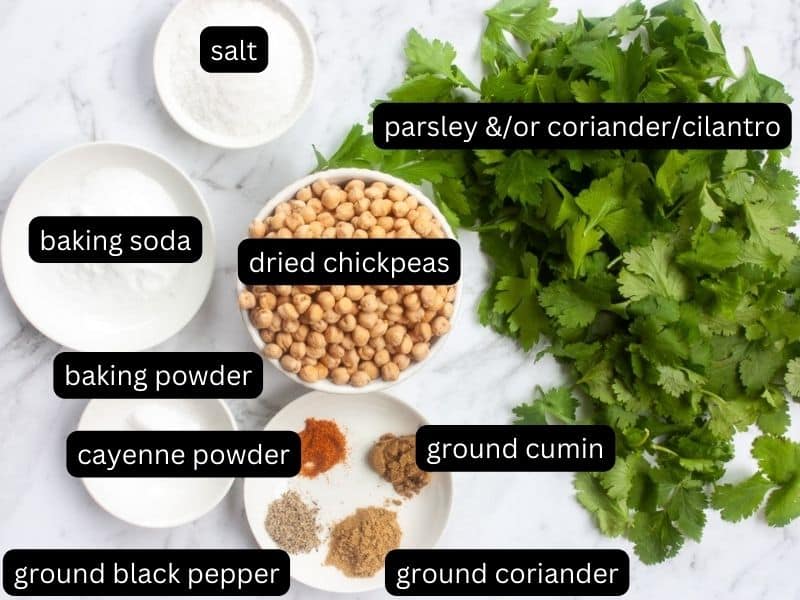
Dried Chickpeas - MUST be dried. Canned ones won't do here - canned chickpeas are already cooked and are soft. Falafel uses dried raw chickpeas that are only briefly cooked when fried.
Baking Soda - used in the soaking water for the chickpeas. It helps to soften the skins of the chickpeas. This makes it easier for them to absorb some of the soaking water to rehydrate and soften. As a side note; adding baking soda to pulses reduces the amount of oligosaccharides (the 'O' in FODMAP). These contribute to bloating and gas if you're sensitive to these (as I am). There is no way I would cite falafel as a low FODMAP food. Yet, you'll be surprised how few FODMAP-related symptoms you get after eating these. I will eat my fair share too; about 5-6 in one meal. We change the soaking water once too. The water drained off the first time is apple juice-coloured; second time it's almost clear. This helps limit the pesky gas-inducing oligo's too.
Baking Powder - aerates the falafel balls for a lighter texture. We add this shortly before forming the mix into balls and frying to maximise its effect.
Salt - a very generous amount used in the soaking water to add flavour. Most won't end up in the chickpeas.
Fresh Herbs - coriander/cilantro, parsley, mint (any combination of). What you use can depend on your preference or what you happen to have. If you're anti-coriander, it is not critical here. Use other soft, green fragrant herbs. These add flavour, freshness and colour to the falafel.
Spices - cumin, coriander, black pepper and cayenne add fragrance and warmness. Falafel aren't usually hot spicy, the amount of cayenne here adds a hint of warmth. You can increase if you want.
Vegetable Oil - for frying. No need to use olive oil here. Any type of neutral-flavoured vegetable oil, such as canola or rice bran will work well. We can re-use for a few batches of falafel, after cooling and straining.
Whipped Tahini Sauce - this is a very easy sauce, great for drizzling over falafel, however you choose to serve them. The ingredients are simply whizzed together in a small food processor or using a stick blender. You can control how drizzle-able the sauce is by controlling how much cold water you add. I make double the quantity suggested in the recipe card below because it's so good to have in the fridge for other things, like drizzling on salads and dipping in carrot sticks.
🔪 Instructions
(Photo 1 below) Soak chickpeas at room temperature for at least 24 hours. NB: I left soaking for 2 days once and they were fine. No, they didn't start sprouting. If you end up soaking them for more than 24 hours, transfer to the fridge.
(Photo 2) The shrivelled chickpeas will expand and smooth out as they suck up the liquid. Discard any 'different' ones you see. Repeat this process half-way through (doesn't have to be precise!) the soaking time. It's not critical if you forget!
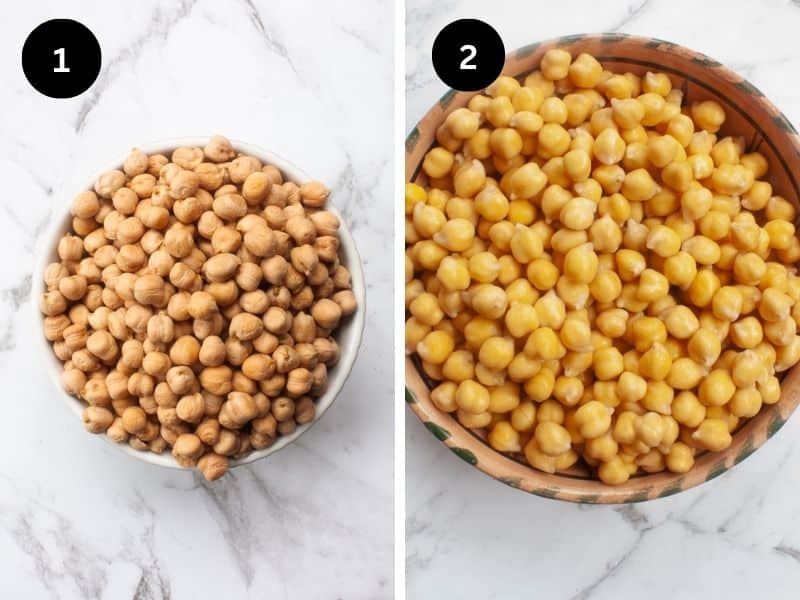
After soaking, we want to rinse the chickpeas under cold water and dry. We don't want the falafel mix to be too wet.
Use a salad spinner to dry the chickpeas
I didn't realise how much I needed a salad spinner before I got one. I use it a lot, not just for salad spinning 😆. They're so handy for washing and then spinning dry salad leaves, greens and now….chickpeas. If you don't have one (yet!), you can use paper towel or a clean tea cloth.
Blend the chickpeas in a food processor with the falafel ingredients apart from the baking powder. We add this just before forming the balls. Process in short bursts until the mixture resembles couscous or coarse sand. Redistribute the mixture to keep the blending even, particularly if it was tight squeeze to fit everything in. Transfer the mix to a large bowl.
Get all your accompaniments ready at this point. For the pitta pockets:
- shredding lettuce and red cabbage
- getting out a tub of houmous
- making your tahini sauce
- finely cubing your tomato and cucumber to make a 'lazy' Israeli salad
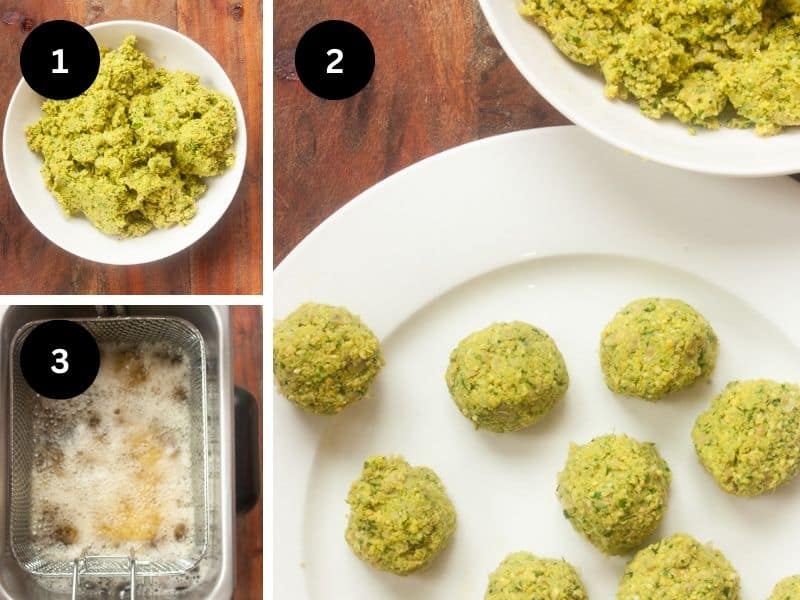
Add the baking powder and form the balls while the oil is coming up to temperature. You can fry in a deep-fat fryer or deep saucepan with a thermometer. The volume of oil you need will depend on the minimum requirement for the deep-fat fryer you have (mine's 3 litres). You'll need less if using a deep saucepan. The falafel don't have to be fully immersed in the cooking oil. You can flip them halfway though cooking time to fry the other side.
(Photo 1 above) add the baking powder to the mix and pulse a couple of times to briefly combine. We don't want to turn the mix into a smooth paste. Tip out into a bowl.
(Photo 2) With a very light touch, form balls of the mixture in your hands, about a heaped tablespoon's-worth each (25g). Flatten slightly. As long as the balls hold together well enough to hit the oil intact, they're good. Try not to compact the balls and make them too tight.
(Photo 3) When the oil is up to 180°C, fry the falafel in at least a couple of batches. We don't want to overcrowd them. This would drop the temperature of the oil and prevent them frying so well. They'll take about 4 minutes. Set a timer! If they're not fully immersed, flip over halfway through. These are best eaten ASAP after frying (but will be fine for the 4 minutes it takes you to fry the second batch).
Pitta Breads - the easiest and quickest way to heat pitta bread is in the microwave. They'll stay soft. I've had success suspending them one at a time over a couple of wooden skewers set over a bowl. This way they don't get soggy. Microwave for about 45 seconds each. Transfer to the inside of a folded tea towel, then wrap in foil to keep them warm. To serve, take them out one at a time to split and fill, keeping the rest well wrapped.

❓FAQ
It is difficult to know how long chickpeas have been dried and stored. Try to buy chickpeas from somewhere with a high turnover of stock or at least bagged with a best before date. If you notice any odd-looking ones - discoloured ones or ones that haven't swelled after a soak, pick out and discard.
I haven't tried it, but the consensus is a firm no. Canned chickpeas are cooked already and are soft and wet. Falafel is made with uncooked but soaked chickpeas. They do their (brief) cook in the oil.
I've tried soaking with and without and could tell no discernible difference. Soaking in salted water means that the chickpeas are seasoned all the way through. Re-salt any changes of water when soaking. Don't forget, not all the salt will be absorbed. Most will be tipped away with the water when you drain the chickpeas.
Some people put flour in them. This will create a denser, smoother texture. I like to keep the falafel fluffy and nubbly in texture. The main purpose of adding flour is to help the mixture bind. This is not necessary. As long as the balls can hold their shape until they make it to the oil for frying, they won't fall apart.
It's not necessary. You won't do it any harm if you want to make the mix in advance (minus the last-minute addition of baking powder). Some say it's easier to form the balls if the mix is colder and firmer. Most of the time, I do the recipe in one go without refrigerating the mix. It works absolutely fine!
As late as you can before forming into balls and frying. Baking powder is 'double-acting'. It's partly activated by addition of liquid, partly activated by heat. The heat part is the frying. The liquid part happens when you add the baking soda to the rest of the ingredients in the falafel dough. You'll get optimal lightness in the balls by doing this as late as possible, before the pockets of air disappear. You can make the rest of the mix (way) ahead, just stir through the baking soda later.
Yes! You should. Especially if you're using a deep-fat fryer, it's a LOT of oil to waste and re-buy next time. I hate food waste and keep it to a minimum. I keep oil just for falafel and reuse it many times. You might need to top up a little with fresh oil next time to have enough. You won't want to use the oil for frying anything else. Falafel has such a distinctive flavour which permeates through the oil. Wait for the oil to cool completely before pouring back into the (clearly labelled!) oil container. It's a good idea to pour it through a small sieve via a funnel. You will inevitably end up with some sediment that settles in the bottom of the oil container. Avoid using that last bit next time. When you are ready to dispose of oil, don't pour it down the sink. It needs to go in the bin in a sealed container.
📖 Recipe
Equipment
- Large food processor - required; this is not a blending job you can replace with manual chopping.
- Deep fat fryer or large saucepan and a thermometer.
- Small food processor/stick blender - for making tahini sauce (optional, but highly recommended).
Ingredients
- 225 g dried chickpeas
- baking soda
- salt
- water
- two handfuls parsley and/or coriander (cilantro) leaves about 30g in total
- ⅛ teaspoon cayenne
- ½ teaspoon ground cumin
- ½ teaspoon ground coriander
- freshly ground black pepper
- teaspoon baking powder
For Frying
- neutral-flavoured vegetable oil (1-3 litres, depending what vessel you're using)
Whipped Tahini Sauce
- 130 g tahini (note)
- 2 tablespoons lemon juice
- freshly ground black pepper
- ½ teaspoon salt
- 150 ml cold water
Optional Accompaniments
- Pita/pitta breads
- 1 tomato
- ½ cucumber
- houmous
- tomato sauce/ketchup
- Tabasco Sauce (optional)
- finely shredded lettuce
- finely shredded purple cabbage
Instructions
- Soak chickpeas - combine two litres of water, two teaspoons of baking soda and a tablespoon of salt in a large bowl. Add the dried chickpeas. Cover the bowl with plastic wrap. Leave at room temperature for 8-24 hours. No need to refrigerate. Drain, rinse and add fresh water, baking soda and salt halfway through soak time (don't stress if you forget).225 g dried chickpeasbaking sodasaltwater
- Whipped Tahini Sauce - blend tahini, lemon juice, pepper and salt in a small food processor. With the food processor running, stream in enough cold water to reach a creamy consistency. It will first break, fear not! Keep adding water slowly until it comes together, is light and smooth and holds a soft peak. I usually add about ⅔ of the water, then more depending on whether I feel like having it thicker and more of a spread, or thinner and more of a sauce. Note that it will firm up a little if refrigerated. Set aside until ready to use.freshly ground black pepper2 tablespoons lemon juice130 g tahini150 ml cold water½ teaspoon salt
- Drain, Rinse & Dry - the chickpeas before transferring to your food processor. A salad spinner works well to dry the chickpeas. Otherwise, shake off excess water in a sieve and use some paper towel to dab off excess moisture.
- Make Falafel Mix - add the fresh herbs, 1 and ½ teaspoons of salt, cayenne, cumin, coriander and about ¼ teaspoon of freshly ground black pepper to the chickpeas. Process in short bursts, redistributing the mix often, until the mixture resembles wet sand. There should be some nubbly bits. It should hold shape when pinched together between your fingers. Transfer the falafel mix to a large bowl. Note: if you're making in advance, cover and refrigerate at this stage until ready to proceed (it's best if we add the last ingredient, the baking powder, when ready to fry).salttwo handfuls parsley and/or coriander (cilantro) leaves⅛ teaspoon cayenne½ teaspoon ground cumin½ teaspoon ground corianderfreshly ground black pepper
- Heat Oil - Preheat oil to 180°C.neutral-flavoured vegetable oil
- Baking Powder - sprinkle the baking powder over the falafel and mix through well.teaspoon baking powder
- Form Balls - with a very light touch, form balls of the mixture in your hands, about a heaped tablespoon's-worth each (25g). No need to weigh each one though! Flatten slightly.
- Fry Balls - fry for 4 minutes until the outside is golden brown. Turn halfway if not completely immersed in oil. Don't overcrowd the fryer; be prepared to cook in at least a couple of batches.

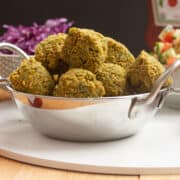
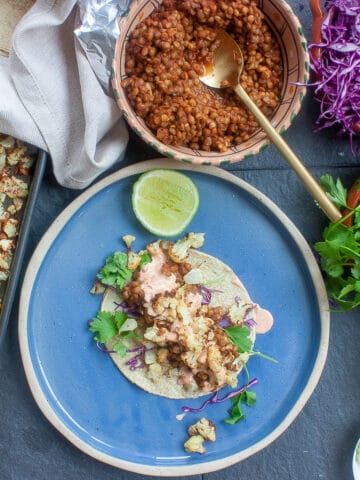


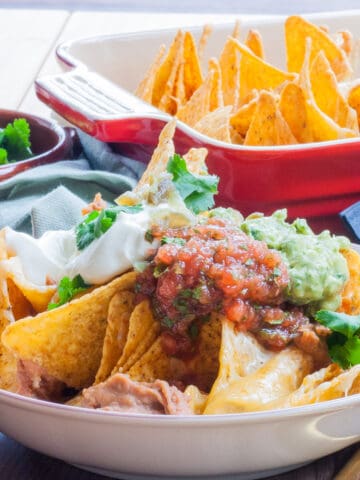
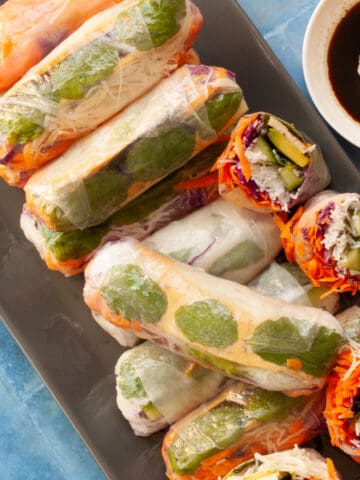
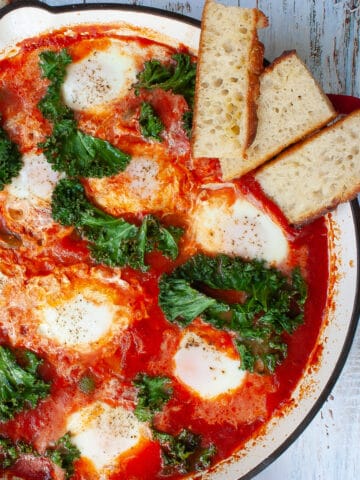
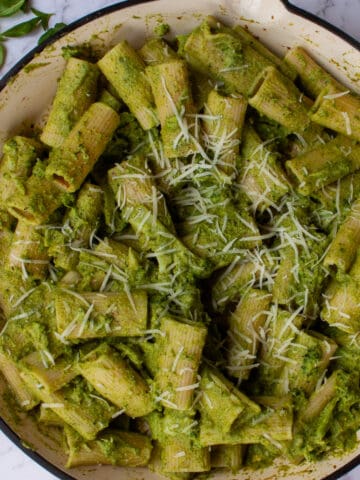
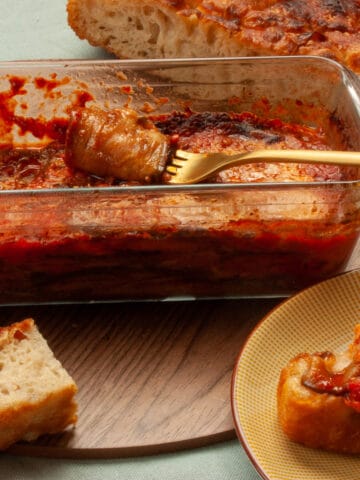
Comments